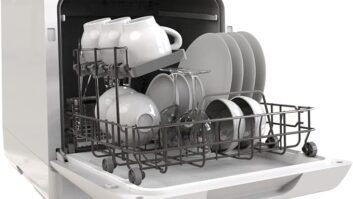Retailer watchers looking for signs of an economic recovery received mixed signals in recent days.
Most distressing was last Wednesday’s U.S. Commerce Department retail sales report for April. Seasonally adjusted sales for electronics and appliance stores slipped 2.8 percent from March, the steepest drop for all retail channels, while unadjusted year-over-year sales fell nearly 12 percent last month. That compares with an 8.8 percent slide in March and 1 percent falloff in February.
Analysts attributed the declines to a depressed labor market and lack of consumer confidence, as well as distortions in data due to calendar shifts and the exclusion of Circuit City.
Adding to the uncertainty was Wal-Mart’s flat fiscal first-quarter results reported last Thursday. Net sales at the world’s largest retailer slipped 0.6 percent from the year-ago period to $93.5 billion and net income was flat at $3 billion for the three months ended April 30. Both were negatively impacted by currency fluctuations and the 2008 leap year, which resulted in one less selling day during the quarter.
Nevertheless, Mike Duke, president/CEO of Wal-Mart Stores, said the company was pleased with the results given “a very challenging global economy.
“Our business overall is stable,” he said during a conference call, “but our customers are still concerned about economic issues. For the Wal-Mart customers, until unemployment eases and confidence really returns, we remain cautiously optimistic about the timetable for economic recovery.”
Sales were also choppy at Conn’s, the multi-regional CE and appliance chain. Net sales rose 2.6 percent to $200.1 million for the three months ended April 30, the retailer said, buoyed by the opening of seven new stores since February. But the company was impacted by Circuit City’s liquidation during the period, which contributed to a 4.6 percent decline in same store sales.
Despite the drop, the multi-regional electronics, appliance and furniture chain believes it grew its CE and majap share during the quarter, as evidenced by a 34.5 percent increase in unit sales of TVs, and a 3.5 percent gain in total appliance sales.
Elsewhere, business was less robust at Costco, where April sales fell 6 percent to $5.2 billion worldwide and same store sales slipped 2 percent in the U.S., excluding the negative impact of gas deflation.
Costco said it continued to enjoy strong unit sales of A/V products, PCs and major appliances, although the categories “continued to comp slightly negative due to significant price deflation.” In particular, the average selling price of TVs at Costco was down about 38 percent year-over-year, the company said.
Similarly, BJ’s Wholesale Club said April sales slipped 3.2 percent to $719 million, although same store sales increased 5.5 percent excluding the impact of gas deflation. Categories with the strongest sales increases included room air, computers and TVs, although BJ’s cited other electronics in general among its weakest April sellers.













